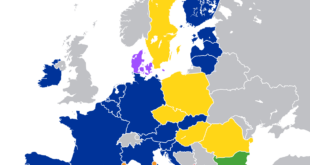- In the early days of the pandemic, the Tablighi Jamaat, a little-known Islamic organisation, found itself in the middle of a controversy in India after many of its patrons who attended a religious congregation tested positive for COVID-19.
- Those who got infected were referred to by many as the ‘Nizamuddin cluster’ and were blamed for “importing” COVID-19 into India.
- Social media was awash with comments and memes insinuating that the group’s members had planned the event. Many members of the Jamaat were charged with disobeying an order promulgated by a public servant and arrested.
- The impact of this move was felt even in places as far away as Tamil Nadu.
- The Tamil Nadu Director General of Police informed the Madras High Court in July that 159 cases had been booked against 356 people across Tamil Nadu for spreading fake news, bigotry and communal hatred against Muslims by linking them to COVID-19.
- Notably, in parallel, the Central government began planning for the MahaKumbh Mela, scheduled for January 2021.
- According to government data, 9.1 million pilgrims took part in the event between January 14 and April 27, 2021.
- In a report titled ‘How COVID-19 restrictions affected religious groups around the world in 2020,’ compiled by the Pew Research Center, India has been ranked first in the Social Hostilities Index (SHI) which measures acts of religious hostility by private individuals, organisations or groups in society.
- The higher the rank, the higher the hostility. This index includes religion-related armed conflict or terrorism, mob or sectarian violence, harassment over attire for religious reasons, and other forms of religion-related intimidation or abuse.
- The SHI uses 13 indicators to measure social hostilities. This was the 13th edition of the Pew survey, which started in 2007.
- India ranked relatively low (33 out of 198 countries) in the Government Restrictions Index (GRI) which measures government laws, policies and actions that restrict religious beliefs and practices.
- The higher the rank, the higher the restrictions. The GRI comprises 20 measures of restrictions, including efforts by the government to ban particular faiths, prohibit conversion, limit preaching or give preferential treatment to one or more religious groups. China topped this category.
- Chart 1 plots the SHI against the GRI for 198 countries in 2020. Each dot corresponds to a country. The higher the dot, the higher the country’s rank on the SHI. The further to the right, the higher the country’s rank on the GRI.
- Table 2 shows the SHI score of select countries in 2007, 2019 and 2020. The countries with relatively high scores in at least one of the years have been listed. India, with a score of 9.4 out of a possible 10, leads the list.
- It is also among the few countries which recorded consistent increases in the SHI in these years. Its SHI score rose from 8.8 to 9.1 between 2007 and 2019 and then increased to 9.4 in 2020, the year the first pandemic case was reported in India.
- In countries such as Afghanistan and Bangladesh, while the SHI reduced between 2007 and 2019, it increased during the pandemic year. In the Philippines, it increased between 2007 and 2019 and decreased during the pandemic year. In Pakistan, it consistently decreased in the considered periods.
- Table 3 shows India’s score on the 13 indicators which were considered to measure the SHI. The scores range from 0 to 1, with 0 corresponding to the least hostility and 1 to the highest hostility. Across all the years considered, India recorded the highest possible score, on most indicators.
SOURCE: THE HINDU, THE ECONOMIC TIMES, PIB
 Chinmaya IAS Academy – Current Affairs Chinmaya IAS Academy – Current Affairs
Chinmaya IAS Academy – Current Affairs Chinmaya IAS Academy – Current Affairs



